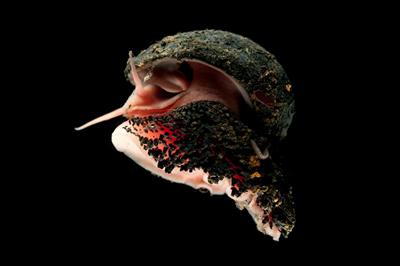
A fascinating deep-sea snail, first described as a new species by an international team of researchers including a marine biologist from the University of Southampton, has now been added to the IUCN (International Union for Conservation of Nature) Red List of endangered species, highlighting the need to preserve deep-sea animals and their habitats from future human activities such as seafloor mining.
Chrysomallon squamiferum – the scaly-foot snail –inhabits hydrothermal vents in the Indian Ocean between 1.7 and 2.8 km deep. The snail, first encountered in 2000 but only christened in 2015, was described as a new species by an international team of researchers including , Associate Professor in Ocean Exploration & Public Engagement at Southampton. Now graduate Elin Thomas ( 2018), currently a PhD candidate at Queen’s University Belfast, is amongst those credited on the assessment that formally identifies the snail as endangered.
“Congratulations to my colleagues for successfully making the case for the scaly-foot snail to be added to the IUCN Red List as an endangered species – the first animal from deep-sea hydrothermal vents to do so”, said Dr Copley. “All of the species’ three populations found so far in international waters are in areas where the United Nations International Seabed Authority has granted “exploration” licences for potential deep sea mining, which highlights the need to protect the diversity of animals and habitats in the deep ocean.”
“I’m also delighted that one of our Southampton Marine Biology graduates, Elin Thomas, is one of those responsible for the scaly-foot snail’s IUCN Endangered Red Listing,” Dr Copley continued. “A great achievement for an early-career researcher contributing to marine conservation in the deep ocean.”
The scaly-foot snail derives its nickname from its ‘foot’ which displays hundreds of armour-like hardened tags called sclerites – fleshy in the centre and hard on the exterior due to a later of protein secreted as part of shell formation, covered by a layer of iron sulfide that gives it a black metallic appearance.
In May 2018, the scaly-foot snail was named amongst the of the decade (2007-17) as part of celebrations marking the wondrous discoveries made during the first decade of the World Register of Marine Species (WoRMS).
The Antarctic Yeti Crab Kiwa tyleri – named for world-renowned British deep-sea and polar biologist Professor Paul Tyler from the University of Southampton – also featured in the top ten.








